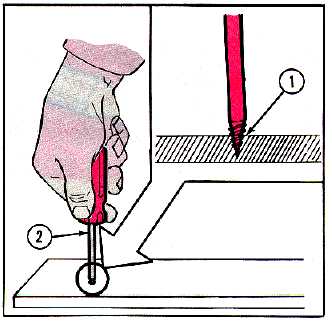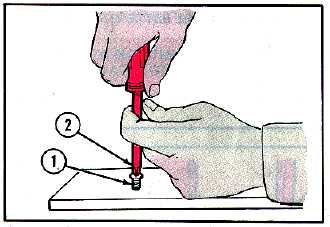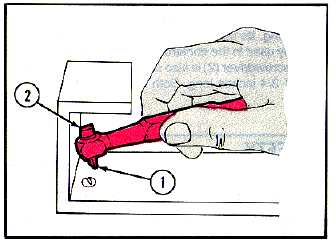TM 9-243
USING SCREWDRIVERS - Continued
PREPARING THE WORK SURFACE
1 Before attempting to drive a screw into wood, you first
make a pilot hole (1) using a screw starter (gimlet) (2),
an awl, a nail, or a drill.
2 Before attempting to drive a screw into sheet metal
you should make a pilot hole using a drill. However,
lightweight sheet metal can be pierced with a nail or
punch.
USING A SCREWDRIVER
1 Insert the screw (1) in the pilot hole. Insert the
screwdriver tip (2) in the screw slot of the screw as
shown.
2 Keep the screwdriver in line with the screw as shown.
You may want to use your other hand to keep the
blade steady.
3 Turn clockwise to screw in, counterclockwise to
unscrew.
4 Do not use a pliers to turn the screwdriver when
driving or removing screws that are hard to turn. For
hard-to-turn screws, use a square blade screwdriver
designed for heavy-duty work and a wrench which
properly fits the blade.
USING AN OFFSET SCREWDRIVER
1 Select the correct style and tip size for the screw being
used.
2 Insert the tip (1) in the screw slot.
3 In tight places you may have to alternate tips (1 and 2)
to complete turning the screw.
22-6





